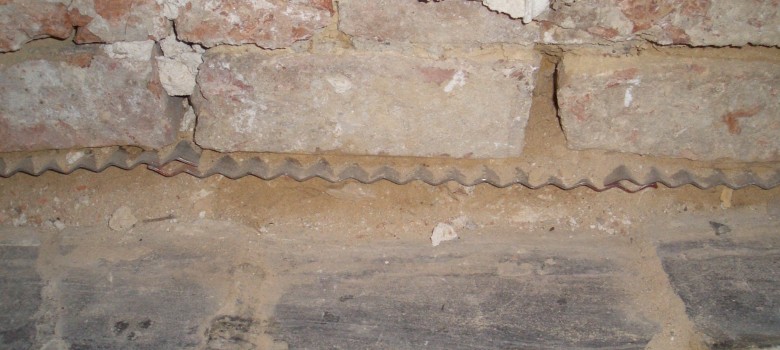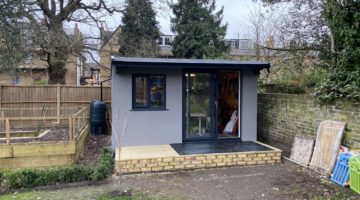
A damp proof course is a layer in the walls of your property that help prevent moisture from move up the walls and into the living area. This is commonly referred to as rising damp.
What is rising damp?
To understand the importance of a DPC and what it does, we need to understand just what rising damp is and how it causes problems. In a property with no DPC or retrofit works, water will rise up through capillary action, up through the wall and over time, make plaster pop and crumble, create damp spots on internal walls, and eventually lead to mould and worse.
It was recognised hundreds of years ago that this could be a big issue. So what can you do to combat this problem?
Slate and plastic DPC’s
When a property is built, it is fairly easy to combat future rising damp problems. A damp proof layer can be fitted to create barrier between the bricks at floor level, and the bricks above, stopping that moisture from climbing up the walls and entering the home.

You can find your DPC by taking a look at the external wall. Look down at ground level and look up about 6 inches or so up the wall. Somewhere around here you will see a thin black line of either slate or plastic running horizontally across the brick work. This is your DPC. Sometime this is going to be tricky to spot, as the DPC might have worn into the wall in the case of plastic, or painted, rendered etc.
What if you don’t have a DPC?
The majority of homes will have DPCs, especially any built in the last 100 years. Some DPC’s can get damaged however, and can then become susceptible to damp penetration. For example, where a house settles over the years, the slate course may crack and allow moisture to begin moving upwards. Fortunately, there are some remedial actions that you can take to help deal with this.
The obvious way to tell if your property’s DPC is not working correctly is to check for damp spots around the home, but unfortunately it is often tricky for the layman to know what is rising damp and what is condensation based damp. These are two very different kinds of damp requiring different solutions.
If you suspect that your home may have a damp problem, it is probably worth getting a survey from a damp expert, who will be able to tell what your damp is being caused by and what actions can be taken to help deal with it.
What can be done about rising damp and damaged DPC’s
There are now a wide array of different chemicals and gels that can be ‘injected’ into the walls to create an artificial DPC. This is much cheaper than having to install a physical DPC into an existing wall, and can do the job just as well. We recommend that you get a professional to do this, though it is possible to DIY if you have some knowhow.
How much does DPC injection cost?
For a typical Victorian mid terrace, where we tend to see many of these remedial actions you are looking at a cost of £500-800. This will be for the cost of materials and a days labour on site. The price will vary with the length of the wall to be injected and the system that is being installed. The process is fairly clean and simple, and once the job is done, it will last for many years.
Think we missed something? Do you have a different opinion?
Comment below to get your voice heard…












Thank you, this was the most comprehensive basic explanation I have found on the net so far!